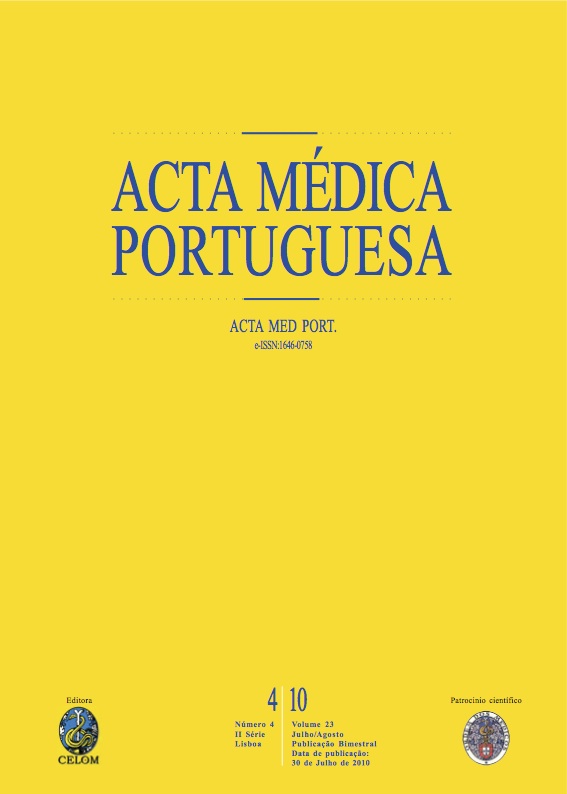Evaluation of the antimicrobial susceptibility profile of microorganisms isolated from urine in the region of Vale do Sousa and Tâmega.
DOI:
https://doi.org/10.20344/amp.692Abstract
The urinary tract is one of the more common sites of bacterial infections, especially in women. Urinary infection can be defined as an infection of urinary tract structures which occurs, generally, as a consequence of the presence or colonization by urine bacteria. The aim of this study was to determine the etiology of urinary tract infections and their susceptibility to antimicrobial agents in the region of Vale do Sousa and Tâmega. From February 2008 to January 2009, 18653 urine cultures were analyzed. From these cultures 1037 were positive. From this total of positive cultures, 18,3% were from males and 81.7% were from females. In bacteriological positive tests, 23 different strains of microorganisms were found. It was verified that the most frequent microorganism was Escherichia coli, followed by Proteus mirabilis, Klebsiella pneumoniae, Enterococcus faecalis and Pseudomonas aeruginosa. For antimicrobial susceptibility it was verified that Escherichia coli showed low susceptibility to amoxicillin and cotrimoxazole. Proteus mirabilis showed good susceptibility to cefotaxime and low to cotrimoxazole, amoxicillin and ciprofloxacin. For Klebsiella pneumoniae was found only a reasonable susceptibility to gentamicin and Enterococcus faecalis showed amoxicillin susceptibility. Pseudomonas aeruginosa showed low susceptibility to all antibiotics analyzed with the exception of the combination piperacillin/tazobactam. In conclusion, this study shows that Escherichia coli, Proteus mirabilis and Klebsiella pneumoniae are the three main microorganisms that causes urinary infections in the region of Vale do Sousa and Tâmega. Therefore, the antimicrobial empirically used must have a spectrum against enterobacteria, because they are the most likely to be present in urinary tract infections acquired in the community. A periodic analysis of the susceptibility profile should be performed over time for each region in order to help in the beginning of the empirical antimicrobial treatment.Downloads
Downloads
How to Cite
Issue
Section
License
All the articles published in the AMP are open access and comply with the requirements of funding agencies or academic institutions. The AMP is governed by the terms of the Creative Commons ‘Attribution – Non-Commercial Use - (CC-BY-NC)’ license, regarding the use by third parties.
It is the author’s responsibility to obtain approval for the reproduction of figures, tables, etc. from other publications.
Upon acceptance of an article for publication, the authors will be asked to complete the ICMJE “Copyright Liability and Copyright Sharing Statement “(http://www.actamedicaportuguesa.com/info/AMP-NormasPublicacao.pdf) and the “Declaration of Potential Conflicts of Interest” (http:// www.icmje.org/conflicts-of-interest). An e-mail will be sent to the corresponding author to acknowledge receipt of the manuscript.
After publication, the authors are authorised to make their articles available in repositories of their institutions of origin, as long as they always mention where they were published and according to the Creative Commons license.









